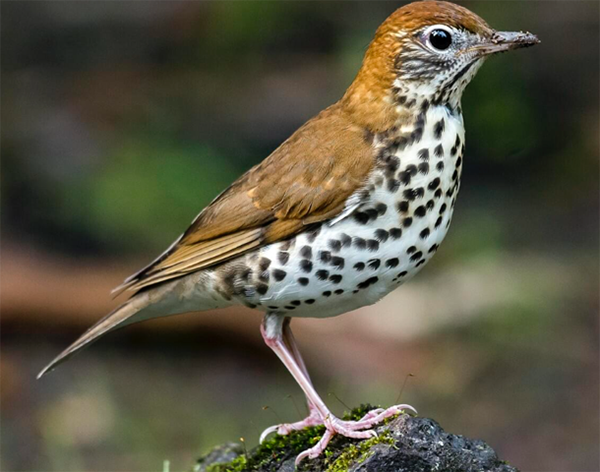The recently released State of the Birds report for the U.S. reveals two population trends, one hopeful, one dire.
Long-term trends of waterfowl show strong increases where investments in wetland conservation have improved habitat conditions, but the report also elaborated on the overall decline in birds in every other habitat category: forests, grasslands, deserts, and oceans.
The report, published by 33 leading science, conservation organizations, and wildlife management agencies, is the first since the landmark 2019 study showed the loss of an estimated three billion birds in the U.S. and Canada in the past 50 years.

“This year’s bird report unequivocally affirms the successful model DU launched 85 years ago,” said Ducks Unlimited CEO Adam Putnam. “Waterfowl and other wetland bird species have succeeded thanks to the investment of our supporters and the science-based approach of our habitat conservation work.”
Report Sources of Data
The report uses five sources of data, including the North American Breeding Bird Survey and Christmas Bird Count, to track the health of breeding birds in habitats across the United States.
“From grassland birds to seabirds to Hawaiian birds, we continue to see that nearly all groups of birds and types of bird habitat have declined significantly,” said Martha Williams, director of the U.S. Fish and Wildlife Service. “The one group that is seeing an increase in population size are wetland dependent birds, including waterfowl.”
“While a majority of bird species are declining, many waterbird populations remain healthy, thanks to decades of collaborative investments from hunters, landowners, state and federal agencies, and corporations,” said Karen Waldrop, a former KDFWR employee who is now chief conservation officer for Ducks Unlimited. “This is good news not only for birds, but for the thousands of other species that rely on wetlands, and the communities that benefit from groundwater recharge, carbon sequestration and flood protection.”
Other Report Findings

Other findings in the report included:
• More than half of U.S. bird species are declining.
• U.S. grassland birds are among the fastest declining with a 34 percent loss since 1970, while waterbirds and ducks in the U.S. have increased by 18 percent and 34 percent respectively, during the same period.
• Seventy newly identified Tipping Point species have each lost 50 percent or more of their populations in the past 50 years, and are on track to lose another half in the next 50 years if nothing changes.
This includes iconic species such as the beloved Rufous Hummingbird, songsters such as Golden-winged Warblers, and the oceanic traveler, the Black-footed Albatross.
“The rapid declines in birds signal the intensifying stresses that wildlife and people alike are experiencing around the world because of habitat loss, environmental degradation and extreme climate events,” said Amanda Rodewald, director of the Cornell Lab of Ornithology’s Center for Avian Population Studies.
“Taking action to bring birds back delivers a cascade of benefits. When we restore forests, for example, we sequester carbon, reduce fire intensity, and create habitat for plants and animals. By greening cities, we provide heat relief, increase access to recreation, and create refuge for migrating birds.”
Declining Forest Songbirds in Kentucky
Kate Slankard, Avian Biologist in the Nongame Branch of KDFWR, said three forest songbirds in Kentucky that are declining are the Eastern Whip-poor-will, Cerulean Warbler, and Wood Thrush.
• The Eastern Whip-poor-will (Antrostomus vociferus) is found throughout the state, but most abundant where forests remain intact, or are only moderately fragmented, according to The Kentucky Breeding Bird Atlas.

They forage for insects on the wing, and their preferred habitat is forest edges.
The Eastern Whip-poor-will winters primarily in the extreme southern U.S. and arrives back in Kentucky to their breeding ground in mid-April. They nest on the ground and eggs are laid directly on the leaves on the forest floor. Most eggs hatch by mid-June.
Seldom seen because of their brindled gray-brown plumage that blends perfectly with leaf litter and shrubby forest edges, the Eastern Whip-poor-will is best known for its melodic song heard on summer nights throughout rural Kentucky.
“(Their decline) is probably due to habitat loss in Kentucky and on the winter grounds, and other factors we have yet to fully understand,” said Slankard.
• The Cerulean Warbler (Setophaga cerulea) is a colorful, small songbird that spends most of its time in the treetops of hardwood forests, hopping along branches in the canopy in search of insects.

The male Cerulean Warbler is a brilliant blue with a whitish neck and breast, with dark blue/black on its wings. The plumage of the female is a dusky hue of blue-green.
These long-distance migrants spend the winter in the Andes in South America. Their populations have declined dramatically due to habitat loss, primarily in their wintering grounds, according to The Cornel Lab All About Birds website.
Most abundant in the eastern third of Kentucky, the Cerulean Warbler returns to its breeding grounds in late April, early May, and newly-hatched birds begin to wander in late July, strengthening their wings for the long migration ahead.
• The Wood Thrush (Hylocichla mustelina), which closely resembles the Brown Thrasher, nests in trees, usually mid-story.
The Wood Thrush’s loud “ee-oh-lay” song rings through the deciduous forests of the eastern U.S. in summer.
Their spotted white breast is distinctive.

Though still numerous, their numbers are rapidly declining.
Slankard said the decline is likely due to habitat loss in Kentucky and on its wintering grounds.
Cowbird parasitism is another factor in the decline of Wood Thrush populations. The brown-headed cowbird (Molothrus ater) is a brood parasite that lays its eggs in the nests of other birds. These “foster parents,” called hosts, usually raise Cowbird young at the expense of their own eggs and young.
The Wood Thrush forages on the forest floor, digging through leaf litter to find insects and other invertebrates.
It overwinters south of Kentucky, as far south as Cuba and Mexico, returning in late April. Two broods are often raised, with young coming off the nest as late as mid-August.
The Wood Thrush is found statewide, with the highest abundance in eastern and western Kentucky, according to the Kentucky Breeding Bird Atlas.
“What affects birds affects us, and birds are telling us they are in trouble,” said Marshall Johnson, chief conservation officer for the National Audubon Society.
“The State of the Birds Report underscores both the serious threats facing birds as well as opportunities to forge solutions that will benefit birds and the places they need. It also shows that what’s good for birds is good for people.”






















